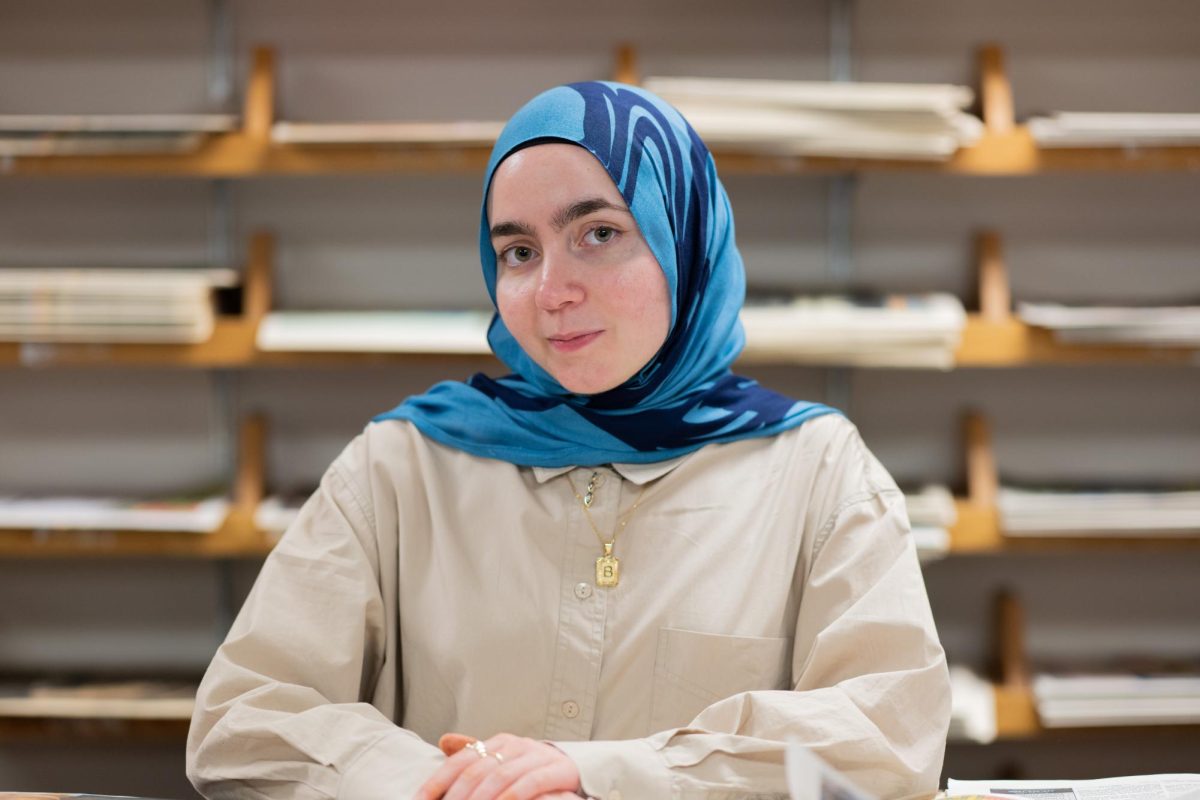Athletic trainers find balance between sports and medicine
(From left) Pitt athletic trainer Jennifer Csonka, Pitt’s senior associate athletic director for sports medicine Jennifer Brown and Pitt wrestling trainer Brian Bonnar.
September 17, 2018
While considering a career path, Jennifer Csonka knew for sure that she wanted to go into medicine. But she couldn’t shake the idea of working in sports, so she decided on a position that combined her two favorite topics — athletic trainer.
“I wanted to do something within the medical field, but I wanted to be within athletics on a more day-to-day basis … there’s an appealing aspect of being able to be at practice, be at games, be involved with teams’ highs and lows and see the maturation of the team,” Csonka said.
Csonka, a 2000 Pitt alum who has worked as the head athletic trainer for women’s soccer since 2003, is one of several Pitt athletic trainers who combines her expertise on the body with her knowledge of sports in order to keep Pitt’s athletes in top shape. What results is a fulfilling, fun and crucial job that is important to the well-beings of Pitt’s athletes and the programs they participate in.
College athletic trainers perform all the tasks needed by athletes before, during and after their games and practices. Their tasks range from taping athletes before games to creating rehab plans for injured players.
Athletic trainers perform their duties in settings and in ways that differ from normal 9-to-5 jobs. Instead of working in one place, athletic trainers constantly travel with teams. During her time at Pitt, Csonka has also worked with men’s and women’s cross country, men’s and women’s track and field, wrestling, women’s basketball and gymnastics.
“It’s a great career. It’s definitely one that, when you’re younger, you want to move around a lot, I feel … which is great because you’ll be in different cities, you’ll be able to work with different teams,” Csonka said.
Being such a crucial part of the process means that trainers must be completely in sync with the teams they take care of, whether it be celebrating after victories or responding to emergency situations. With the on-call aspects of the job, athletic trainers have to be ready to deal with an unexpected injury or schedule change at any moment.
“It is a field, which is still growing and changing, but it’s one in which you need to be very adaptable because coaches change their minds with practice times and lift times … there are some long hours, there’s weekends, there’s lots of holidays,” Csonka said. “But it’s worth it because you can be a part of a team that makes it to the NCAA tournament in the Final Four, which is an experience like none other.”
Pitt wrestling trainer Brian Bonnar discussed the education an athletic trainer needs to attain in order to achieve their position — he himself went through six years of schooling. He earned a bachelor’s degree in athletic training at Pitt and his master’s in the same subject from Ohio University before returning to the Panthers’ athletic department in 2003 to work.
This level of education was once only seen as a bonus, according to Bonnar, but it’s now becoming an obligation in order to start a profession as an athletic trainer. According to the National Athletic Trainers’ Association, those training to pursue careers as athletic trainers will soon be required to attain a master’s degree in athletic training at the minimum.
But no schooling can prepare an athletic trainer for the the highs and lows that the job can bring. Bonnar has been to multiple NCAA championships for wrestling and seen a lot of intense and worrying injuries — he considers his responses to some of the incidents that happened there among the best achievements of his career.
“Some of my best stories are from NCAA wrestling championships. That tournament is a grueling three-day event and guys are beat up by the end,” Bonnar said.
Above all else, Bonnar said there’s one requirement that all seeking to become an athletic trainer need to possess that can’t be acquired with a degree, recommendation or experience.
“I think everyone in this business has a passion for helping people … that’s what athletic trainers are … we’re very giving and we want to help,” Bonnar said. “You have to love to help people … you’re trying to help these athletes achieve the most they can achieve.”
A career as an athletic trainer can also suit anyone willing to be adaptable and looking for variation. Jennifer Brown, senior associate athletic director for sports medicine, wasn’t planning to become an athletic director when she was studying human development and psychological services at Northwestern University in the late ‘90s. Then she did a work-study with some of the trainers at her college.
“I really saw how the athletic trainers I worked with loved their job and I knew that was something I was interested in — wanting to have a job that wasn’t the same thing every day — and athletic training is constantly different, no two days are ever alike,” Brown said.
Brown went on to get a master’s in fitness and wellness management from the University of Nebraska at Omaha in 2003. She then held numerous jobs as an athletic trainer at several universities and worked as the NCAA athletic health care administrator before arriving at Pitt in 2018.
While Brown has worked primarily in athletics, she noted there are also opportunities elsewhere for trainers to work. They don’t have to limit themselves to working strictly with athletes, but can instead branch out and work with anyone who performs physical actions in their workplace.
“Athletic trainers aren’t just in the collegiate setting, there’s other areas like working with physicians in offices or in industrial work, working with companies and performing arts — there’s so many different areas,” Brown said.
Brown said the benefits of life as an athletic trainer far outweigh the troubles that can come about with dealing with the injuries of the athletes they become extremely close with. She described it as one of the most fulfilling aspects of a rewarding profession.
“To see an athlete at their worst when they’re injured and when they get the ability to get back on the field or the court … that’s really one of the highlights for me to be able to do that,” she said.








